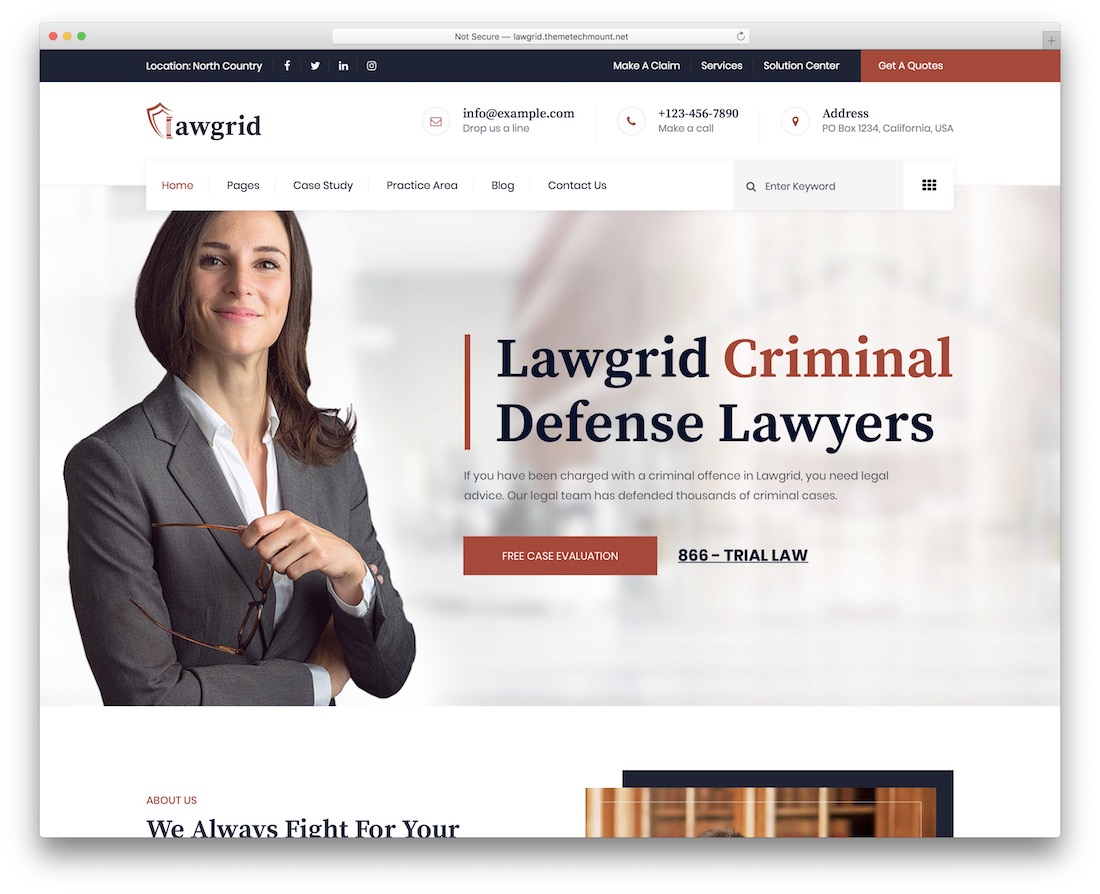
Market Analysis
In today’s digital age, lawyers need to have a strong online presence to reach their target audience and grow their business. A well-designed website is an essential part of any lawyer’s marketing strategy.
To create a website that is effective, lawyers need to understand their target audience and what they are looking for. They also need to research their competitors’ websites to see what is working well and what could be improved upon.
Target Audience
The target audience for lawyer websites is typically potential clients who are looking for legal advice or representation. These potential clients may be individuals, businesses, or organizations. They may be looking for help with a variety of legal issues, such as personal injury, criminal defense, or family law.
Competitors’ Websites
When researching competitors’ websites, lawyers should pay attention to the following:
- The overall design and layout of the website
- The content of the website
- The s that the website is targeting
- The call to action on the website
By understanding what their competitors are doing well, lawyers can improve their own websites and make them more effective.
Industry Trends
The legal industry is constantly changing, and lawyers need to be aware of the latest trends in order to stay ahead of the competition. Some of the most important trends to watch include:
- The rise of online legal services
- The increasing use of social media by lawyers
- The growing importance of mobile-friendly websites
By staying up-to-date on the latest trends, lawyers can ensure that their websites are meeting the needs of their target audience.
Website Design Principles
Effective lawyer websites prioritize user experience (UX) and accessibility, ensuring a seamless and inclusive online presence.
Visual hierarchy and content organization play a crucial role in guiding users through the website. By employing principles of information architecture, designers create a logical and intuitive flow, making it easy for visitors to find the information they seek.
Examples of Well-Designed Lawyer Websites
- Jones Day: This global law firm’s website features a sleek and sophisticated design with a clear navigation structure and informative content.
- Baker McKenzie: Known for its user-friendly interface, Baker McKenzie’s website offers personalized content based on the user’s location and practice area.
- Dentons: Dentons’ website showcases a modern and responsive design, adapting seamlessly to various devices and screen sizes.
Content Development

Crafting compelling and informative content is crucial for engaging potential clients and establishing credibility. Effective content should be clear, concise, and relevant to the needs of your target audience.
Storytelling and case studies play a significant role in building trust and establishing your expertise. By sharing compelling stories of your successes and case studies that demonstrate your skills, you can create a personal connection with potential clients and showcase your abilities.
Search Engine Optimization ()
Optimizing your website for search engines is essential for increasing visibility and attracting organic traffic. Implement relevant s throughout your content, including in headings, meta descriptions, and image alt tags.
- Use long-tail s that are more specific and less competitive.
- Create high-quality backlinks from reputable websites.
- Ensure your website is mobile-friendly and loads quickly.
Legal Considerations

The design of a lawyer’s website raises ethical and legal concerns that must be carefully considered. Failure to adhere to these considerations can result in professional misconduct or even legal liability.
Lawyers must comply with industry regulations, such as the American Bar Association’s Model Rules of Professional Conduct. These rules govern the use of technology in legal practice, including website design. For example, lawyers must avoid misleading or deceptive content, maintain client confidentiality, and ensure website accessibility for individuals with disabilities.
Website Security and Privacy
Website security is paramount for protecting sensitive client information. Lawyers must implement appropriate security measures to prevent unauthorized access to their website and data. This includes using encryption, firewalls, and regular security updates.
Privacy concerns are also essential. Lawyers must comply with data protection laws, such as the General Data Protection Regulation (GDPR) in the European Union. This includes obtaining informed consent from clients before collecting personal data and providing clear privacy policies outlining how their information will be used.
Call-to-Action Optimization
Incorporating effective call-to-actions (CTAs) on a lawyer website is crucial for driving conversions and generating leads. CTAs are strategically placed elements that guide visitors towards taking a desired action, such as scheduling a consultation or contacting the firm.
Clear and persuasive language is essential in creating compelling CTAs. Use action-oriented verbs that convey a sense of urgency and value. For instance, instead of “Contact Us,” consider using “Schedule a Free Consultation Today” or “Get Your Legal Questions Answered.”
Successful CTAs used by lawyer websites include:
– “Schedule a Consultation”
– “Request a Case Evaluation”
– “Get a Free Legal Analysis”
– “Download Our Free Guide”
– “Contact Us for a Quote”
Mobile Optimization
With the increasing prevalence of mobile devices, it has become crucial for law firms to optimize their websites for a seamless mobile experience. Responsive design ensures that a website adjusts its layout and content to fit the screen size of the device being used.
Mobile website design presents unique challenges, including limited screen space and the need for intuitive navigation. Best practices include using clear and concise language, avoiding cluttered layouts, and optimizing images for fast loading.
Examples of Lawyer Websites with Exceptional Mobile Experience
- Jones Day: This global law firm’s website offers a user-friendly mobile interface with easy-to-navigate menus, optimized content, and a responsive design.
- Baker McKenzie: Known for its international presence, Baker McKenzie’s mobile website features a sleek and intuitive design with accessible contact information and practice area breakdowns.
- Cooley LLP: Cooley’s mobile website showcases a modern and visually appealing design with clear call-to-actions and simplified navigation for on-the-go users.
Website Analytics and Tracking

Website analytics is a crucial aspect of web design, providing invaluable insights into website performance, user behavior, and areas for improvement. By tracking key metrics, lawyers can gain a comprehensive understanding of how their website is performing, identify areas that need optimization, and make informed decisions to enhance the user experience.
There are various types of analytics tools available, such as Google Analytics, Matomo (formerly Piwik), and Clicky. These tools offer a wide range of features, including website traffic analysis, visitor demographics, page views, bounce rates, and conversion tracking. By leveraging these tools, lawyers can gain a deep understanding of their website’s performance and identify areas for improvement.
Using Analytics to Improve Website Design and Content
Website analytics can be used to optimize website design and content by providing valuable insights into user behavior and preferences. By analyzing metrics such as page views, bounce rates, and time spent on page, lawyers can identify areas of their website that need improvement. For instance, if a particular page has a high bounce rate, it may indicate that the content is not engaging or relevant to the target audience. By analyzing the data, lawyers can make informed decisions to improve the page’s design, content, or structure to enhance user engagement.





